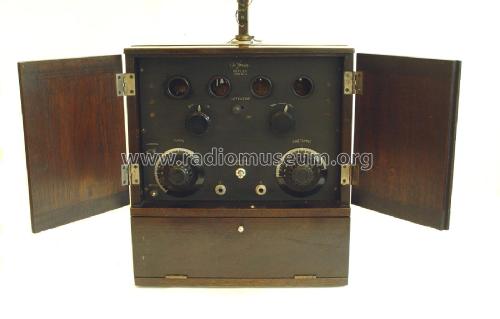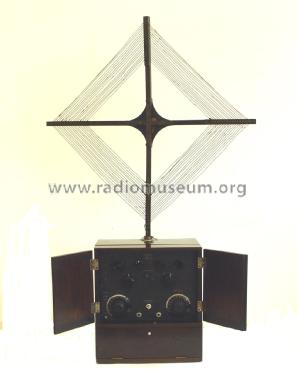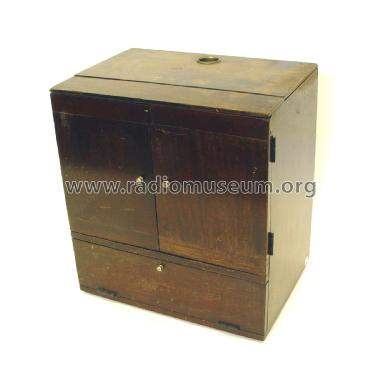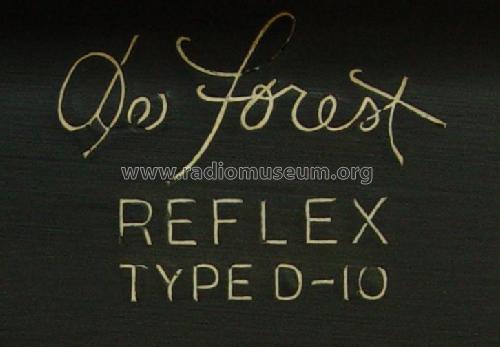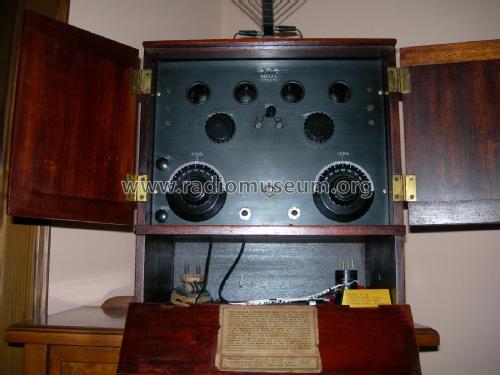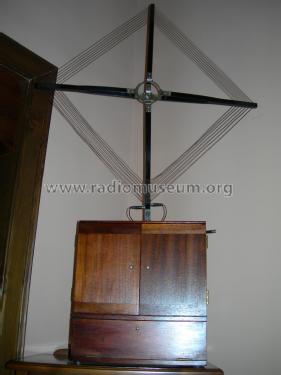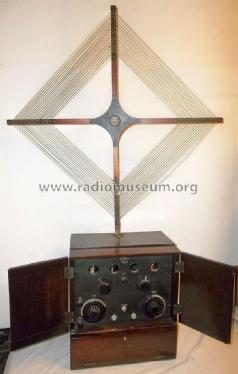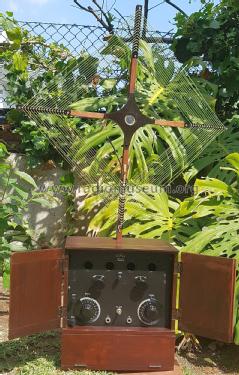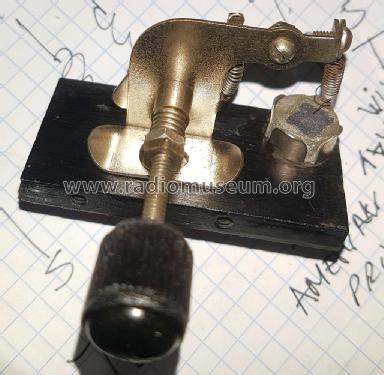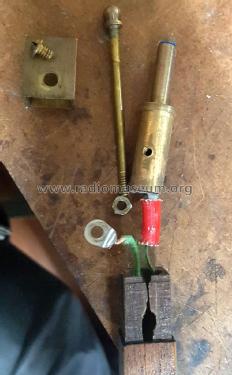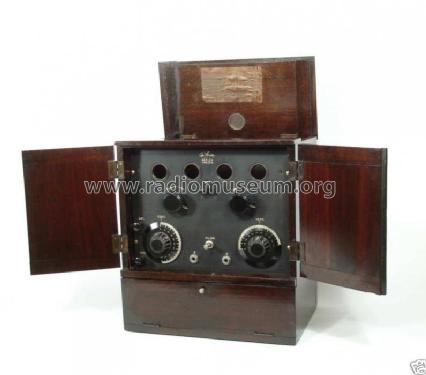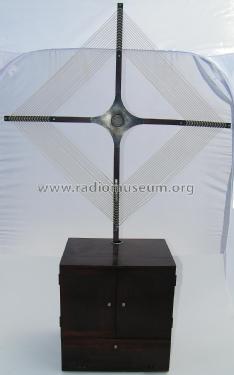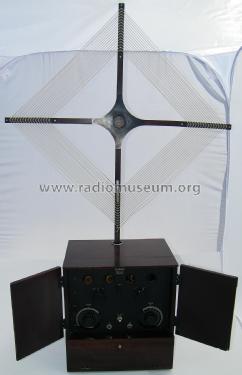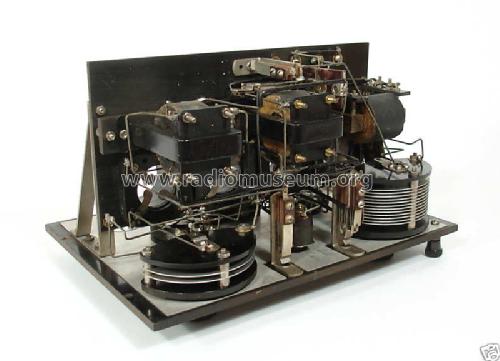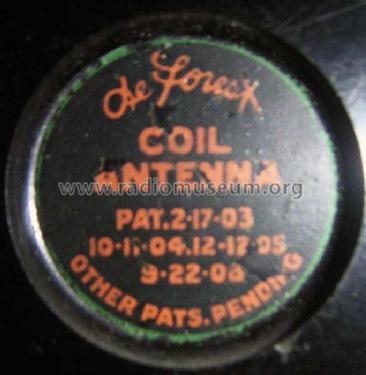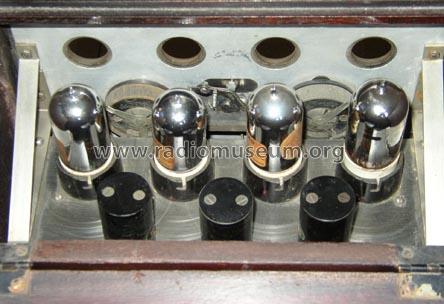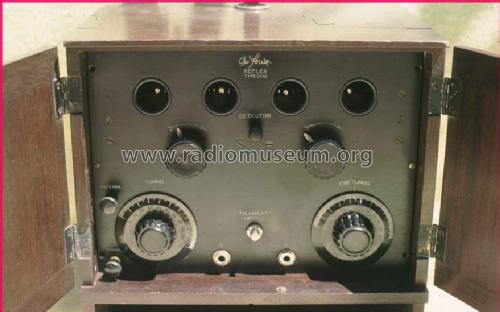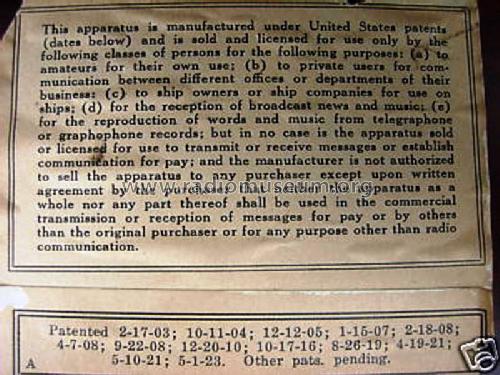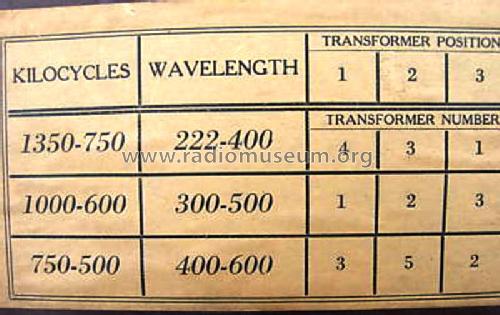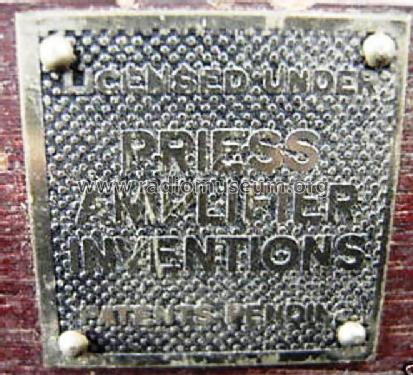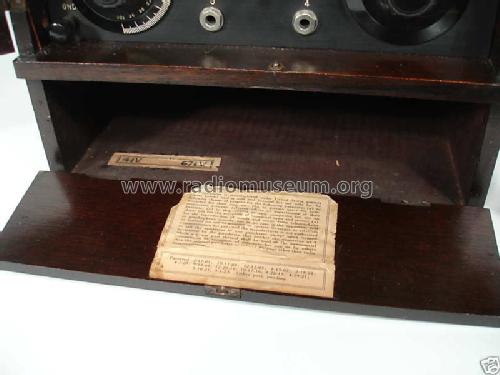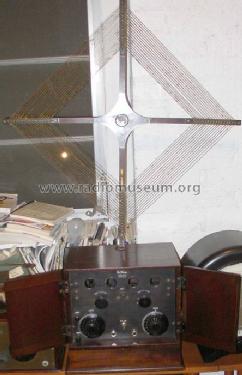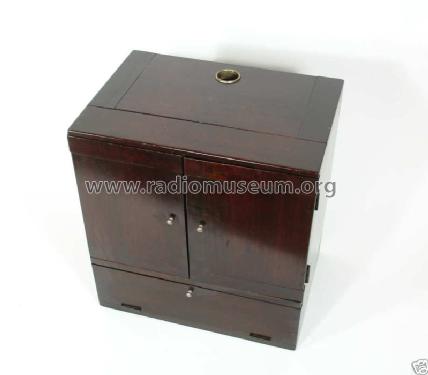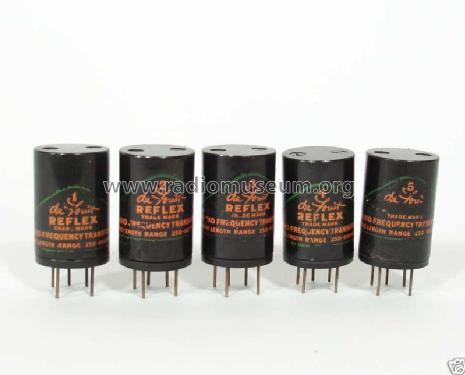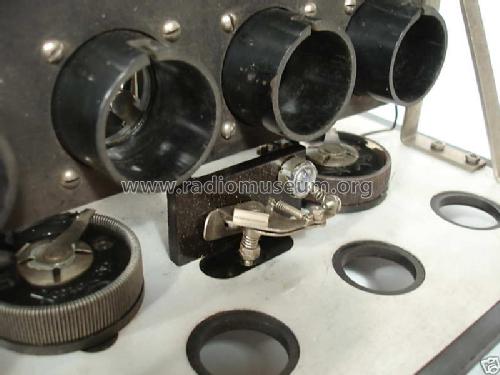- Land
- USA
- Hersteller / Marke
- DeForest Radio Telephone & Telegraph Co. (De Forest); New York
- Jahr
- 1923
- Kategorie
- Rundfunkempfänger (Radio - oder Tuner nach WW2)
- Radiomuseum.org ID
- 37074
-
- anderer Name: Lee De Forest Mfg.
Klicken Sie auf den Schaltplanausschnitt, um diesen kostenlos als Dokument anzufordern.
- Anzahl Röhren
- 4
- Hauptprinzip
- Geradeaus allg. (mit oder ohne Rückk.); ZF/IF 3 kHz; 3 NF-Stufe(n); Reflex
- Anzahl Kreise
- 1 Kreis(e) AM
- Wellenbereiche
- Mittelwelle, keine anderen.
- Betriebsart / Volt
- Trockenbatterien / 4.5 & 67.5 Volt
- Lautsprecher
- - Dieses Modell benötigt externe(n) Lautsprecher.
- Material
- Gerät mit Holzgehäuse
- von Radiomuseum.org
- Modell: D10 - DeForest Radio Telephone &
- Form
- Tischgerät, Truhenform, meist mit Deckel (NICHT Schrägpult).
- Abmessungen (BHT)
- 320 x 350 x 230 mm / 12.6 x 13.8 x 9.1 inch
- Bemerkung
-
One dial (primary tuning control knob). The D-10 is a 4-tube reflex receiver, using a crystal detector. Either Frank Squire or William Priess (the self-proclaimed "father of reflex") developed the D-10, although Gernsback gives credit for the invention of reflex to Marius Latour. In the D-10, two tubes have both RF and audio amplification functions. So, the receiver performs as a 6-tube radio (three stages of RF amplification and three stages of audio amplification) seven if the detector is considered. Reflexing is a rather sophisticated electrical design technique, since the interstage RF and audio transformers are arranged so that a single tube can perform two functions. For more information see "Antique Radio Classified" Volume 14, August 1997.
- Nettogewicht
- 7.2 kg / 15 lb 13.7 oz (15.859 lb)
- Originalpreis
- 150.00 $
- Datenherkunft extern
- Ernst Erb
- Datenherkunft
- Radio Collector`s Guide 1921-1932
- Schaltungsnachweis
- Rider's Perpetual, Volume 1 = 1931/1934 (for 1919-1931)
- Literaturnachweis
- Collector's Guide to Antique Radios 4. Edition
- Literatur/Schema (1)
- Radio Manufacturers of the 1920s, Vol 1 (page 176)
- Literatur/Schema (2)
- Radio Broadcast, Aug. 1923, Page 338
- Literatur/Schema (3)
- Le Guide du Collectionneur TSF Biraud/Foster, Vol. I (page 146)
- Weitere Modelle
-
Hier finden Sie 158 Modelle, davon 133 mit Bildern und 16 mit Schaltbildern.
Alle gelisteten Radios usw. von DeForest Radio Telephone & Telegraph Co. (De Forest); New York
Sammlungen
Das Modell befindet sich in den Sammlungen folgender Mitglieder.

